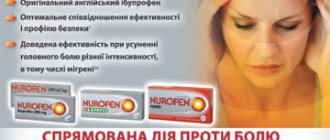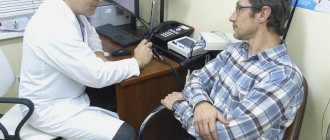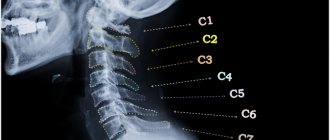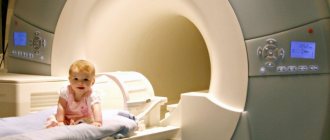There are 6 types of headaches:
- Muscle tension
- Vascular
- Neuralgic
- Liquorodynamic
- Functional or psychalgia
- Mixed
Here is an interesting plate based on statistical data from outpatient visits to a pediatric neurologist at our clinic.
Please note that complaints of headaches appear in children in preschool age, with a subsequent increase.
| Age/ Nosology | 0-1 year | 1-3 years | 4-7 years | 8-10 years | 11-14 years old | 15-17 years old |
| Headaches, unspecified | 7% | 9% | 16% | 18% | ||
| Tension type headaches | 3% | 12% | 18% | 24% | ||
| Vascular headache | 0.3% | 0.8% | 2% | 10% | 18% | |
| Migraine | 1% | 1% | 1% | 1% | ||
| Functional, including against the background of cerebrovascular disease | 2% | 4% | 6% | 9% |
Tension type headaches
(psycho-emotional or muscle pain) occur when the child’s psycho-emotional load does not match his capabilities (emotional-volitional or cognitive), which in turn increases the tone of the “emotional” muscles that are attached to the periosteum of the skull. This muscle pain is considered a headache. Now it becomes clear why this type of headache is characteristic of the age at which preparation for school begins, and increases exponentially by the time of passing the Unified State Exam.
Vascular headache
This is pain in response to stretching or inflammation of the vascular wall. There can be many reasons, from vascular abnormalities to banal vascular dystonia. Migraine is also a type of vascular headache, has characteristic clinical manifestations, and its cause is aseptic inflammation of the vascular wall.
Neuralgic headache
occurs when there is pressure on the nerve trunk, its branch or node, and after compression there is ischemia and pain. The reason for this may be post-traumatic or inflammatory swelling along the nerve, as well as any space-occupying formation. Neuralgic headache can also be of central origin, as a result of dysfunction of the nociceptive and antinociceptive systems of the brain.
In the occurrence of liquorodynamic headache
the main role is played by increased intracranial pressure. Intracranial pressure may increase with the appearance of additional formations, both liquid and solid, in the cranial cavity, which in turn compresses and/or displaces the meninges, blood vessels and nerves, causing pain. This may be a tumor, inflammation of the meninges of the brain (meningitis). Intracranial hypertension can also occur as a result of the appearance of any neoplasm that obstructs the outflow of cerebrospinal fluid from the cranial cavity.
Functional headache
most often has a psychogenic mechanism.
Mixed form, has mixed origin.
We have analyzed six types of headaches, which, in turn, have different causes.
To figure out what exactly is causing your child’s headaches, you need to contact a pediatric neurologist, who, after a neurological examination, will decide whether you need consultation with a related specialist and may prescribe additional examination methods.
In the children's building of the clinic
You will be able to get advice from experienced specialists, as well as conduct all the necessary examinations to identify the causes of headaches in your child.
Information prepared for you by:
Razina Elena Evgenievna – pediatric neurologist, epileptologist, functional diagnostics doctor, leading specialist of the clinic. Conducts a reception in the Children's building on Usachev.
Compound
The composition of Nurofen depends on the form of its release:
| Dosage form | Active ingredient: Nurofen | Auxiliary Connections |
| Capsules | Ibuprofen 200 mg | Macrogol-600, potassium hydroxide, water. shell: gelatin, sorbitol 76% solution, crimson dye [Ponceau 4r] (e124), water, white ink [opacode wb ns-78-18011]. |
| Pills | Ibuprofen 200 mg | Croscarmellose sodium, sodium lauryl sulfate, sodium citrate dihydrate, stearic acid, colloidal silicon dioxide. shell: carmellose sodium, talc, acacia gum, sucrose, titanium dioxide, macrogol 6000, black ink [opacode s-1-277001]. |
| Suspension for children | Ibuprofen 100 mg/5 ml | Polysorbate, glycerol, maltitol syrup, sodium saccharinate, citric acid, sodium citrate, xanthan gum, sodium chloride, domiphene bromide, orange flavor 2m16014 or strawberry flavor 500244e, purified water. |
| Express gel | Ibuprofen 5 g/100 g | Hyethylose, sodium hydroxide, benzyl alcohol, isopropanol, purified water. |
| Suppositories for children | Ibuprofen 60 mg | Solid fat 1 (vitepsol n 15), solid fat 2 (vitepsol w 45). |
pharmachologic effect
NSAIDs. Has analgesic properties. Relieves fever. Blocks the spread of inflammatory processes.
Pharmacodynamics
The mechanism of action of the drug is explained by the properties of a propionic acid derivative and is caused by inhibition of the synthesis of PG - mediators of pain, inflammation and hyperthermic reaction. Indiscriminately stops the work of COX of the first and second types. Slows down the production of prostaglandins.
Reversibly inhibits platelet aggregation. The analgesic effect lasts for up to eight hours.
Pharmacokinetics
Has high absorption. Almost completely absorbed from the gastrointestinal tract. The maximum concentration in blood plasma when taken orally on an empty stomach is recorded after 45 minutes. If you take the tablets with food, the Cmax time approximately doubles.
90% bound to blood proteins. Gradually penetrates into the joint cavities. Retains in synovial fluid. Lower concentrations of ibuprofen are found in cerebrospinal fluid than in plasma. Passes into breast milk in small quantities.
Metabolized in the liver. It is excreted from the body by the urinary system, a small part - with bile. The half-life is two hours.
Nurofen's analogs
Among the most popular analogues of Nurofen are: Ibuprofen, MIG 400, Faspik, Maximcold.
The gel form can be replaced with Ibuprofen ointment, Dolgit gel and Dolgit cream.
Which is better Nurofen or Ibuprofen?
Both drugs contain the same active ingredient, therefore they have the same indications and contraindications. But, according to patient reviews, Ibuprofen more often causes unwanted side reactions.
Which is better Nurofen or Paracetamol?
Paracetamol begins to act more slowly, which is why the patient is forced to endure the pain longer. It also lowers body temperature worse and for a shorter period of time in viral and infectious diseases.
Paracetamol does not have anti-inflammatory properties like Nurofen. But it is safer for pregnant women.
At the same time, during treatment with Ibuprofen, adverse reactions occur more often, and there is a possibility of bleeding. It should not be used for a long time, as the risk of damage to the mucous membranes of the stomach increases.
Which is better Nurofen or Panadol?
Panadol is based on paracetamol, Nurofen is based on ibuprofen. Both drugs relieve pain and reduce body temperature. They qualitatively eliminate the signs of acute respiratory viral infections, headaches, toothache and muscle pain. They do not accumulate in the human body and do not form toxic compounds.
Panadol lowers body temperature more slowly. It is safer for children and pregnant women. If necessary, drugs can be combined or alternated.
Which is better Nurofen or Cefekon?
Cefekon is a medicine based on paracetamol. Its effect lasts for up to 4 hours. Nurofen acts longer (up to 6-8 hours) and much faster. This is its significant advantage. It also relieves toothache better.
Which is better Nurofen or Ibuklin?
Ibuklin is a combination drug. It contains both ibuprofen and paracetamol. Very quickly lowers body temperature to normal levels. It is stronger than Nurofen. At the same time, it is characterized by a stronger load on the liver and irritates the mucous membranes of the gastrointestinal tract. It can only be purchased with a doctor's prescription.
The use of Ibuklin is relevant if the body temperature exceeds 39 ° C. It is advisable to use it once.
Which is better Nurofen or Nise?
Nise is recognized as a more progressive anti-inflammatory. It is based on nimesulide. This substance quickly relieves muscle pain, has antipyretic properties, and does not cause stomach ulcers. But it is contraindicated in patients under 16 years of age. Long-term use may cause toxic liver damage.
Nise has more pronounced toxic properties than Nurofen. But with short-term use, they most often do not appear.
Dosage
The dosage of Nurofen for adults and children over 12 years of age is 1 capsule or tablet (200 mg) up to 3-4 times a day. The interval between doses should be about six hours. The maximum permissible daily dosage is 1200 mg.
The dosage of Nurofen for children depends on age and body weight. It should not exceed more than 30 mg/kg:
- 3-6 months (5-7.6 kg) - 2.5 ml three times a day;
- 6-12 months (7.7-9 kg) - 2.5 ml up to 4 times a day;
- from one to three years (10-16 kg) - 5 ml 3 times;
- from 4 to 6 years (17-20 kg) - 7.5 ml three times a day;
- from 7 to 9 years (21-30 kg) - 10 ml in the morning, lunch and evening;
- from 10 to 12 years (31-40 kg) - 15 ml three times.
Treatment of a child with Nurofen should last no more than three days.
The dosages of children's suppositories are as follows:
- age from 3 to 9 months - 1 piece three times a day;
- from 9 months to 2 years - 1 piece 4 times.
The gel is intended for patients over 14 years of age. You need to squeeze out a strip 4 to 10 cm long from the tube and gently rub it into the painful area. Reuse is possible after 4 hours.
Indications for use
Indications for use of Nurofen:
- headache, migraine;
- toothache;
- neuralgia;
- myalgia;
- pain in the back;
- rheumatism;
- algodismenorrhea;
- joint pain;
- osteoporosis;
- rheumatoid arthritis;
- pain resulting from any injury.
Nurofen is often used for colds. It relieves inflammation and lowers body temperature, improving the general well-being of the patient.
Nurofen for influenza should be taken only to combat fever - the drug does not have antiviral activity and cannot speed up recovery.
Nurofen at temperature
Can be used if body temperature is more than 38.5°C. If fever persists after three days of anti-inflammatory treatment, you should definitely consult your doctor.
Nurofen for headaches
Relieves the pain of tension. Has a high safety profile. Eliminates symptoms for up to 8 hours. At the same time, it eliminates inflammation.
Nurofen for toothache
The drug is effective for pulpitis, relieves pain during the recovery period after surgical treatment. The medicine can be given to children in the form approved for them during the eruption of baby teeth.
Nurofen for menstruation
Very quickly and effectively eliminates painful cramps, improves a woman’s well-being during menstruation. Depending on how you feel, you can use up to 3-4 tablets per day.
Nurofen for chickenpox
Used only to normalize body temperature. It does not speed up the healing process, since it does not affect viruses and does not destroy the smallpox pathogen.
It can cause purulent complications, so it is not recommended for this diagnosis.
Nurofen for migraines
Eliminates severe headaches, fights intolerance to sounds and bright light. Can be used at the prodrome stage, as well as directly during an attack.
Contraindications
Contraindications to the use of Nurofen are as follows:
- complete/incomplete combination of bronchial asthma, recurrent polyposis of the nose and paranasal sinuses and intolerance to Aspirin or other NSAIDs;
- allergy to Nurofen;
- erosion/ulcer of the gastrointestinal tract, bleeding of ulcerative origin;
- history of perforation and bleeding of a gastrointestinal ulcer caused by the use of any non-steroidal anti-inflammatory drug;
- severe liver/renal failure;
- acute liver diseases;
- hyperkalemia;
- severe disturbances in the functioning of the cardiovascular system (NYHA class four);
- recovery after coronary artery bypass surgery;
- bleeding of any origin;
- decompensated heart failure;
- hemorrhagic diathesis;
- third trimester of pregnancy;
- individual fructose intolerance, sucrase-isomaltase deficiency, glucose-galactose malabsorption;
- hemophilia, blood clotting disorder.
Particular caution should be exercised when treating with Nurofen in patients with a history of gastritis, colitis, enterocolitis, bronchial asthma, allergies, lupus erythematosus, and Sharpe's syndrome. Also, patients with severe dehydration and nephrotic syndrome should be treated under the supervision of a doctor.








